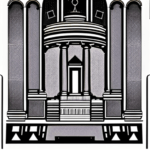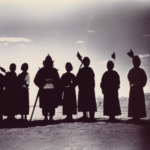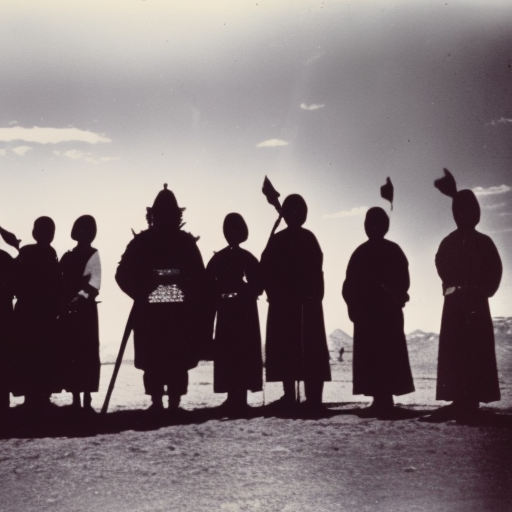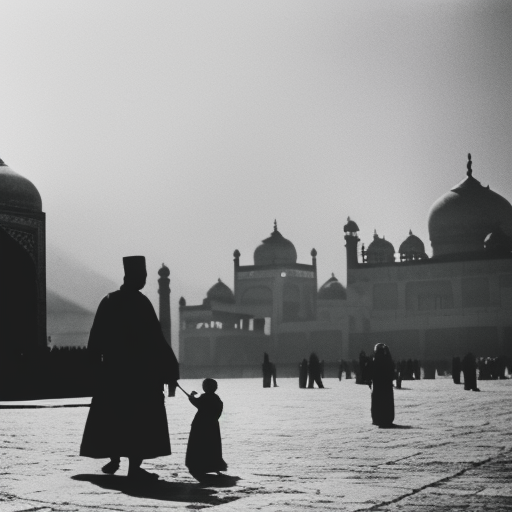Genghis Khan and the Mongol Empire
Genghis Khan, born as Temujin in 1162, was the founder and first Great Khan of the Mongol Empire. He united the nomadic tribes of Mongolia and led them to conquer a vast empire that stretched from China to Eastern Europe. Genghis Khan’s military strategies, organizational skills, and ruthless tactics made him one of the most successful conquerors in history.
Rise of Genghis Khan
Genghis Khan was born into a noble family but faced a difficult childhood. After his father’s death, he faced numerous challenges and was even captured and enslaved. However, he managed to escape and began gathering followers, gradually building his power and reputation. In 1206, he was proclaimed the Great Khan and took the title Genghis Khan, meaning “universal ruler.”
Military Campaigns
Under Genghis Khan’s leadership, the Mongols embarked on a series of military campaigns to expand their empire. They first targeted neighboring tribes and then turned their attention to larger states. Genghis Khan’s military strategy was based on speed, mobility, and surprise. The Mongols were skilled horsemen and archers, and they used these advantages to devastating effect. They also employed psychological warfare, often intimidating their enemies into surrendering without a fight.
Conquest of China
One of Genghis Khan’s most significant conquests was the invasion of China. The Mongols launched multiple campaigns against the Jin Dynasty, eventually capturing its capital in 1215. Genghis Khan then turned his attention to the Western Xia Dynasty and conquered it in 1227. After his death, his successors continued the conquest, eventually establishing the Yuan Dynasty in China.
Expansion into Central Asia and the Middle East
After consolidating their control over China, the Mongols turned their attention to Central Asia and the Middle East. They launched campaigns against the Khwarazmian Empire, capturing its capital in 1221. The Mongols then swept through Persia, Iraq, and Syria, leaving a trail of destruction in their wake. In 1258, they captured Baghdad, bringing an end to the Abbasid Caliphate.
Legacy of Genghis Khan
Genghis Khan’s empire was the largest contiguous empire in history, stretching from the Pacific Ocean to the Mediterranean Sea. His military conquests had a profound impact on the regions he conquered. The Mongols brought stability and security to the lands they ruled, facilitating trade and cultural exchange. They also promoted religious tolerance and adopted many aspects of the cultures they encountered.
Administrative Reforms
Genghis Khan implemented several administrative reforms to govern his vast empire. He established a centralized system of government, dividing the empire into provinces and appointing loyal administrators to oversee them. He also created a postal system, known as the Yam, to facilitate communication and the movement of troops. Genghis Khan’s legal code, known as the Yassa, provided a set of laws and regulations that governed the empire.
Death and Succession
Genghis Khan died in 1227 while on a military campaign against the Western Xia Dynasty. Before his death, he appointed his third son, Ogedei, as his successor. Ogedei continued his father’s conquests and further expanded the Mongol Empire. After Ogedei’s death, the empire was divided among his sons and grandsons, leading to the formation of several successor states.
Conclusion
Genghis Khan’s military genius and leadership skills enabled him to build one of the largest empires in history. His conquests transformed the political and cultural landscape of Eurasia. The Mongol Empire left a lasting legacy, shaping the history of the regions it ruled and influencing future empires and conquerors. Genghis Khan’s impact on world history cannot be overstated.












